
Login or create an account
CloseReturning Customer
I am a returning customer
Login or create an account
CloseRegister Account
If you already have an account with us, please login at the login form.
Your Account Has Been Created!
Thank you for registering with Treasure Mountain Mining!
You will be notified by e-mail once your account has been activated by the store owner.
If you have ANY questions about the operation of this online shop, please contact the store owner.
Account Logout
You have been logged off your account. It is now safe to leave the computer.
Your shopping cart has been saved, the items inside it will be restored whenever you log back into your account.
The Colorful World of Lab Grown Minerals
1.
First, there are the die-hard folks who are uncompromising about their
mineralogy, who are likely to say, "No lab grown minerals in my
collection, period."
2. Then there are
those who are not so adamant, and who appreciate the beauty and
perfection of man-made mineral specimens regardless of the source.
So who is right? They both are! To me, it is a matter of personal taste, not right or wrong (although some hard-core mineralogists might disagree with me on this!).
A PARABLE (WATCH OUT - THIS COULD HAPPEN TO YOU!)
Here is a story
about a friend who changed his mind about this issue: Tom Minnich is one
of the best known active field collectors in New England, and is very
serious about his mineralogy. He has taken college level courses in both
mineralogy and crystallography, and knows his stuff. A decade ago, I
was invited to see his collection, which is outstanding,, and included
about 75% self-collected specimens of outstanding quality. When I first
saw the collection, he did not have any lab-grown specimens, and
dismissed them as being "fakes". Later, he came to visit me to see our
collection. Searching through boxes in our warehouse, he opened a box
with chalcanthite specimens that were grown in Poland. He found a piece
with a perfect 5" crystal on it, and said, "I have to have this. Look at
the size and perfection of that crystal, and the color!" He bought it,
and has it still in a prominent place in his display.
PROS OF LAB-GROWN CRYSTALS
1. "WOW" FACTOR
Lab grown specimens deliver a mighty wallop to the naked eye, creating a
powerful visceral and visual impact. I can guarantee that your
non-collector friends will be immediately drawn to them, because of
their bright colors. They certainly do deliver a lot of bang for the
buck.
2. COLOR
Because the chemical mix is determined by the grower, brilliant, fully saturated colors are the rule, not the exception.
By growing seed crystals into large specimens, the size of the crystals often reaches astonishing proportions. Take the case of chalcanthite, which occurs in nature as small grains a millimeter or less in size. You will never find a natural crystal of this material that is over 4" tall!
4. LACK OF DAMAGE
When they are created, specimens are in pristine condition, and unless they are mishandled, they remain in top notch condition.
5. PRICE
Because they are lab grown, with none of the high costs of mining
(drilling, blasting, mucking, specimen cleaning, etc.), lab grown
crystals are much less expensive than natural crystals of comparable
size and quality.
6. CRYSTAL PERFECTION
Lab-grown crystals form as pristine crystals, with razor-sharp edges and
perfect terminations, attaining a degree of perfection rarely found in
the "wild".
CONS OF LAB-GROWN CRYSTALS
1. INVESTMENT
From an investment standpoint, lab grown crystals will not increase in
value the way mineral specimens do, because in theory, more can be made
in the future.
2. WATER SOLUBILITY Lab-grown minerals such as chalcanthite, alum, boussingaultite, and pruskite can be damaged if they become wet. However, unlike salt, they are not affected by humidity). Bismuth, on the other hand, has to be heated to 600ºC to melt.
3. SCORN
If you show your lab-grown specimens to hard core mineralogist-type
collectors, be prepared to be snubbed. (Not a problem if you have a
thick skin.)
HOW CRYSTALS GROW IN A SOLUTION
Crystals grow by a
process termed nucleation. During nucleation, the atoms or molecules
that will crystallize (solute) are dissolved into their individual units
in a solvent. The solute particles contact each other and connect with
each other. This sub unit is larger than an individual particle, so more
particles will contact and connect with it. Eventually, this crystal
nucleus becomes large enough that it falls out of solution
(crystallizes). Other solute molecules will continue to attach to the
surface of the crystal, causing it to grow until a balance or
equilibrium is reached between the solute molecules in the crystal and
those that remain in the solution.
CONCLUSION
Whichever group you
belong to, I hope you will consider adding some lab-grown specimens to
your collection. I bet you will get a lot of enjoyment out of them, and
that you will also appreciate the reactions of friends and family who
see your collection.
PHOTOS OF LAB-GROWN CRYSTALS

The intensely colored electric blue of chalcanthite is really attention grabbing...
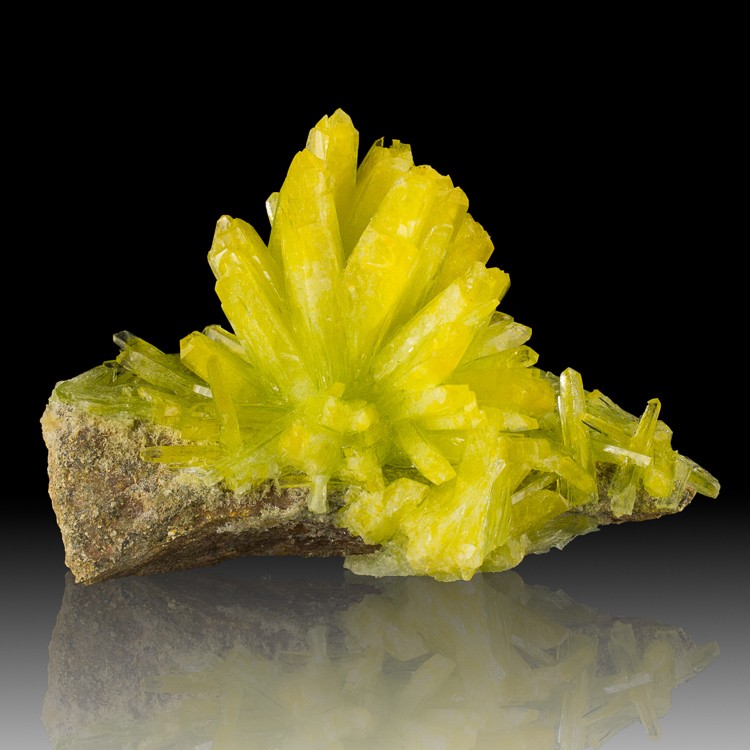
...and it also comes in a bright sunshine yellow
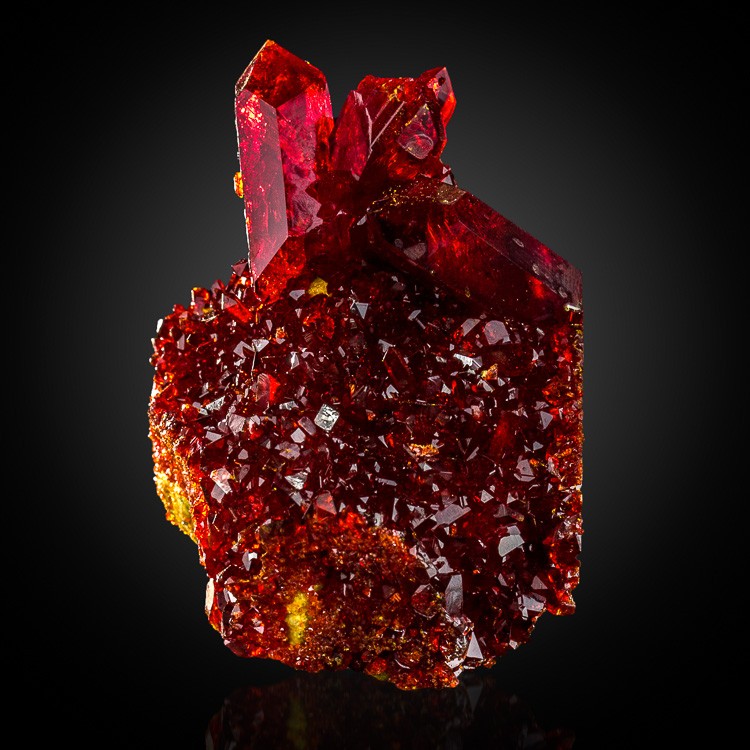
Pruskite is colored an extraordinarily rich and vibrant red
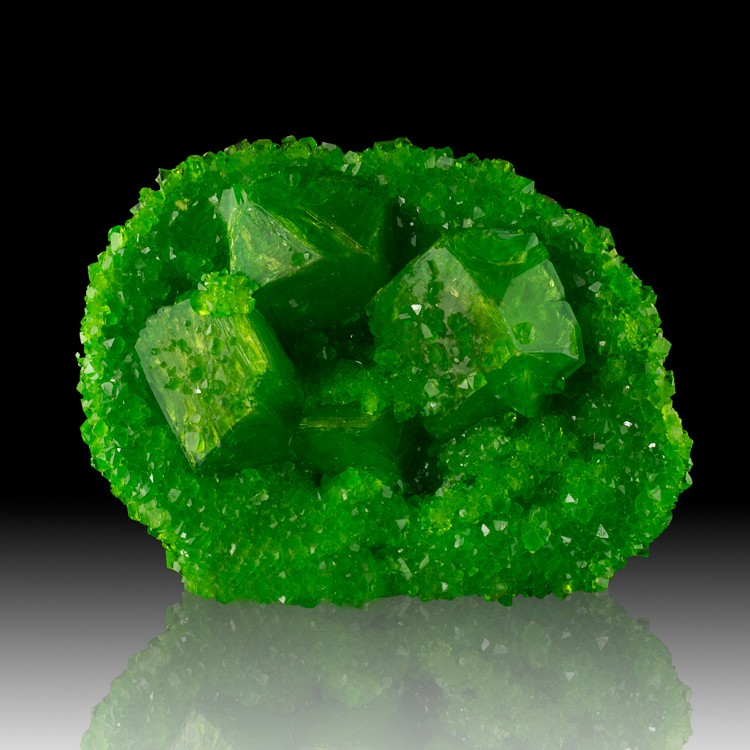
The electric green of boussingaultite has a high visual impact...

...as do specimens in turquoise blue...

...as well as ones in this rich, super-saturated red...

...or crystals like this 5" crystal in canary yellow.
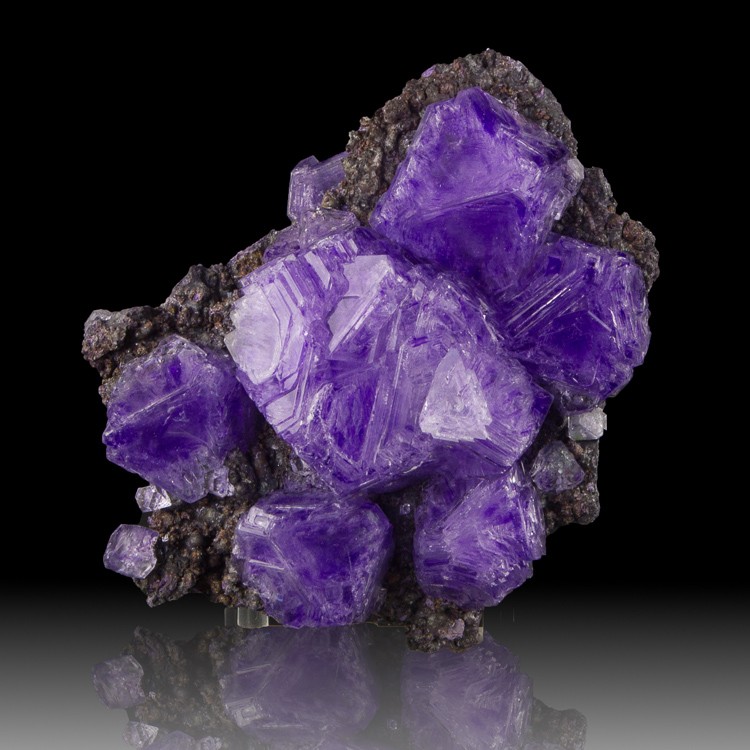
Alum is another mineral that comes in a wide range of colors,
including this rich amethyst purple grown in Poland...
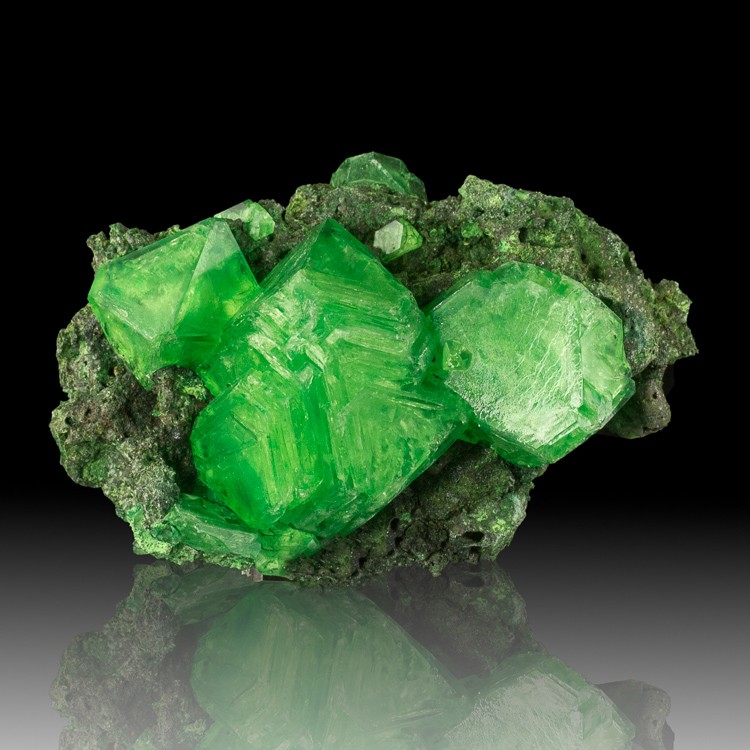
...and also this intensely colored green alum, created by the same grower in Poland...

From China comes this peppermint-stick pink alum which is shaped like a pineapple...

...and also this cactus-like shaped alum in a lovely shade of lavender
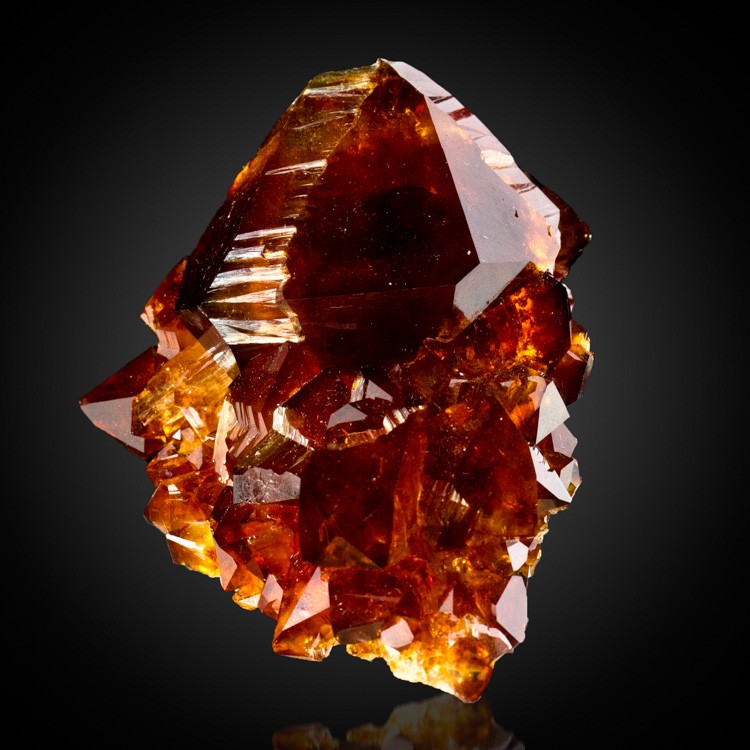
Arkanite comes in crimson red colors with a bright wet-look luster

The flashy metallic rainbow of colors of bismuth crystals grown in Germany is truly astonishing...

...as are the blues and magentas of hoppered bismuth crystals from England

Ammonium dihydrogen phosphate is another lab-grown mineral, here in apple green...

and here in iceberg blue

Here is a similar lab-grown species, ammonium manganese phosphate, in a bright butter yellow
